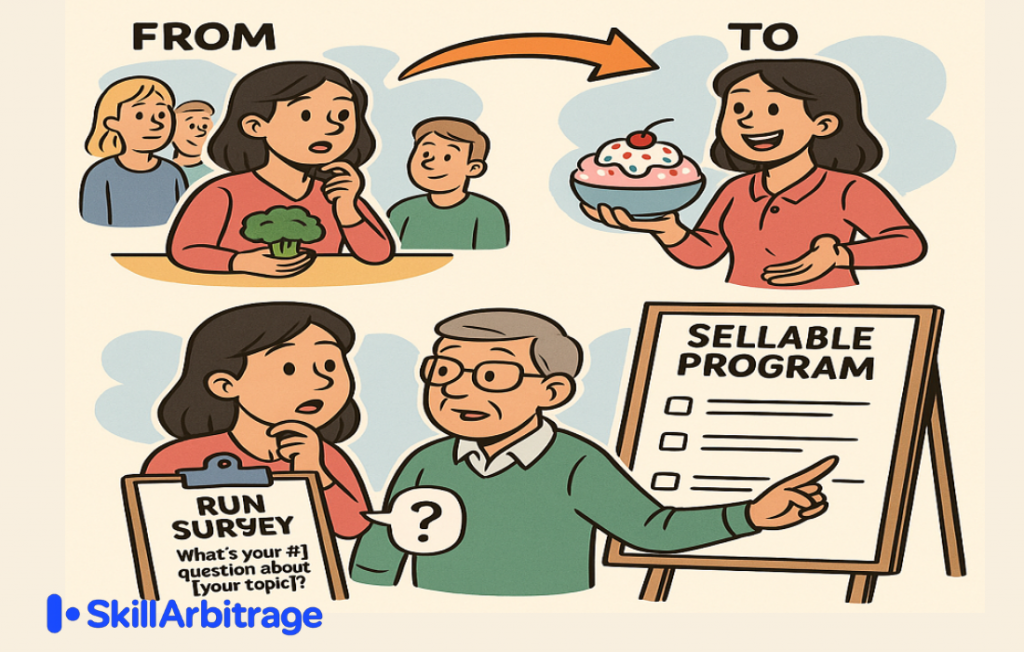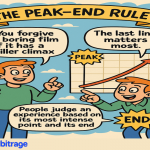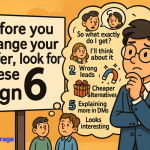This article shows freelancers how to use a simple survey to shift from selling execution to selling insight. You will learn how to extract coaching ideas from real conversations, pre-sell your first offer, and turn client questions into scalable programs.
Previously on Curiosity Hooks…
Savitha used curiosity hooks to promote a workshop on curiosity hooks. The idea was clever and got attention fast. But the real outcome? That’s what she’s about to find out.
In this article, she faces the lukewarm response head-on and learns the real cost of being interesting without being clear. To fix it, she turns to the Ask Campaign and discovers how to build her next offer using language straight from her audience.
(Continued…)
Savitha hadn’t said much since the webinar.
She sat curled up on her bed, laptop half-shut, staring at nothing. Her usual bounce had flattened. Even the giant whiteboard of ideas, once packed with hooks and frameworks, was wiped clean.
Harsh knocked gently and entered without waiting.
He didn’t say anything at first. Just walked over, placed a tub of ice cream on her desk, and sat cross-legged on the floor.
A few minutes later, Raja followed. “No lecture,” he said, raising his hands. “Just here to check if you’re still alive.”
She gave a half-smile, barely.
“Can I say one thing?” Raja asked.
“Will you say it anyway?” she mumbled.
He smiled. “You weren’t wrong. The content was good. You showed up sharp. People came. But…”
“But?”
Harsh finally spoke. “They left when it mattered.”
That landed. She looked down.
“I keep replaying it,” she said. “The build-up, the hook, the chat going wild… and then just silence. It’s like they enjoyed the performance, but no one believed the pitch.”
“They didn’t,” Raja said gently.
She waited.
“Because it wasn’t obvious what you were offering. You gave them fascination, but not direction. You made them curious but not committed.”
Silence again.
“So what now?” she asked finally. “Write better hooks?”
Harsh shook his head. “No more guessing. We flip the script. We stop talking and start listening.”
Raja slid a notebook toward her. “We run an ask campaign. Find the people who showed up, figure out what they really wanted, and rebuild from their words, not ours.”
She picked up the spoon, dug into the ice cream, and nodded slowly.
“One condition,” she said.
“Name it,” said Harsh.
“You two write the damn survey. I’m eating this.”
Step 1: Stop selling vegetables in an ice cream world
Raja stood up and stretched.
“Let’s go for a walk. I explain better when my blood’s moving.”
Savitha rolled her eyes but reached for her slippers. “Fine. But no metaphors until we cross the gate.”
Outside, the Bangalore air was heavy with jasmine and honking. They walked past a fruit vendor yelling about seedless grapes.
“You know what your webinar felt like?” Raja said.
“Here we go,” Harsh muttered.
Why “need” doesn’t sell and “want” does
“It was like selling vegetables in an ice cream world,” Raja said. “You stood there, holding out a bunch of organic broccoli, and expected a queue.”
Savitha raised an eyebrow. “Curiosity hooks are broccoli?”
“No. Curiosity hooks are great. But you used them to talk about why people should eat better. That’s a hard sell.”
“What should I have done instead?” she asked.
“Use the same hooks to sell brownies. With hidden protein,” he grinned. “Make them crave it first. Then sneak in the benefits.”
Savitha stayed quiet. The roadside vendor was now calling out about guavas.
Harsh jumped in. “People don’t want to be fixed. They want to be seen. Entertained. Inspired. You were trying to fix them.”
She frowned. “But my whole point was that good content should be useful.”
“It can be,” Raja said. “But first, it has to be wanted. You were marketing spinach. You need to wrap it in paratha.”
The vehicle vs. the features
“You’re not selling the program,” he continued. “You’re selling the outcome they fantasize about. The vehicle, not the parts.”
Harsh sipped his chai. “Think of it like this. Your coaching is the vehicle. Powerful, smooth, gets them where they want to go.”
“But?” Savitha asked.
“But people don’t buy engines. They buy leather seats. Bluetooth. The feeling of arriving.”
Step 2: Run the Ask Campaign (a freelancer’s market-guided curriculum builder)
They stood in silence for a minute, watching a group of aunties march through the park in neon sneakers.
Savitha stirred her tea absently. “So I wrapped the broccoli wrong. Fine. But how do I know what flavour they do want?”
“That,” Raja said, “is where the Ask Campaign comes in.”
Harsh pulled out his phone. “It’s basically a market-guided curriculum builder. Three steps. Stupid simple.”
Savitha raised an eyebrow. “Everything sounds simple after your launch fails.”
Harsh smiled. “Fair. But this actually works. Here’s the formula.”
The 3-step formula
He counted on his fingers.
“Step one: Find a hot market. Not just anyone with a pulse. A group that’s already thinking about your topic. Searching, ranting, trying stuff.”
“Step two: Ask them what they want. Don’t guess. Don’t assume. Just ask.”
“Step three: Build exactly that. Name it using their words. Sell it back like it was their idea.”
Raja leaned against the tea stall. “Most coaches build top-down. ‘I know what you need.’ The Ask Campaign flips it. Bottom-up.”
Savitha looked skeptical. “But what do I ask? People don’t know what they want half the time.”
“They don’t have to,” Harsh said. “You’re not asking for strategy. You’re asking for desire. There’s only one question that matters.”
The Golden Question
He typed it out on her phone:
“What’s your #1 question about [your topic]?”
“That’s it?” she frowned.
“That’s it,” Raja nodded. “Ask a hundred people this, and you’ll spot the pattern. You’ll hear urgency in their voice. You’ll spot blind spots they don’t even realise they have. And you’ll collect exact phrases you can mirror in your pitch.”
“Language, urgency, blind spots,” Harsh echoed.
“Basically,” Raja said, “you stop selling what they should want. You start selling what they’re already trying to solve at 2 AM on their cracked iPhone screen.”
Savitha was quiet again.
But this time, it wasn’t a doubt.
It was a calculation.
Step 3: Launch your survey and collect 100 real responses
Raja leaned forward, flipping open his laptop.
“Now comes the fun part. You don’t need a fancy funnel. Just one page. One question.”
Savitha raised an eyebrow.
“One question?”
“Yup,” Harsh chimed in. “Simple sells. Especially when you’re still figuring out what people actually want.”
Building the ask page
Raja clicked open a sample doc.
I’m creating a new program for aspiring and early-stage coaches.
If you’re a coach or want to become one, what’s your #1 question about making it work?
Savitha read it out loud. “That’s it?”
“That’s it,” said Raja. “It’s short. It’s specific. And it puts them in the driver’s seat.”
She nodded slowly. The simplicity was disarming.
“Offer them early beta access as a thank you,” Harsh added. “But don’t add more fields. Keep it single-question and frictionless. You want honesty, not homework.”
Where to promote it (Without being spammy)
They brainstormed where she could share it:
- Text it to friends, former clients, or peers who’ve shown interest.
- Drop it in relevant Facebook groups and communities where aspiring coaches hang out.
- Post it on her Instagram stories or Facebook profile, with a casual call to action.
- If needed, run a small paid ad targeting coaches and creators.
The goal? Not conversions. Just clarity.
Savitha took a deep breath. For the first time since the webinar flop, the fog was lifting. This wasn’t about getting it perfect. It was about listening and then building the program her future clients were already trying to find.
Step 4: Turn raw questions into sellable curricula
By the end of the week, Savitha had 93 responses.
Some were thoughtful. Some were rushed. A few were completely unhinged.
She slumped on the floor, scrolling through the spreadsheet. “How the hell am I supposed to make sense of all this?”
Raja tossed her a marker.
“You don’t. You cluster.”
Pattern-spotting: Find the 8–10 common questions
They sprawled out the responses on Post-its across the floor.
Harsh crouched over one. “‘How do I get my first client?’ That came up like… twelve times.”
Raja added, “‘How do I price my coaching?’ Another hot one.”
They grouped similar ones together, like marketing fears, confidence wobbles, and niche confusion. A few outliers got tossed. “Someone here wants to know how to coach their cat,” Harsh muttered. “That’s a no.”
After an hour, they had 8 solid clusters.
Drafting the course skeleton
Raja started writing them down like headers:
- How to Find Your First Client
- What to Charge (Without Underpricing Yourself)
- Do You Really Need a Niche?
- How to Coach Without Feeling Like a Fraud
“These aren’t just modules,” he said. “They’re headlines. Straight from their mouths. That’s what makes it sell.”
Savitha looked at the board. For the first time, it didn’t feel like she was guessing.
She wasn’t inventing problems. She was solving real ones.
“This isn’t a curriculum,” she whispered. “It’s a mirror.”
Harsh grinned. “Exactly. You don’t teach what you think is important. You teach what they’re already losing sleep over.”
And just like that, the course had a shape.
It didn’t come from her head.
It came from their mouths.
Step 5: Bonus asset
The next morning, Savitha was already scribbling furiously in her notebook.
Harsh walked in, bleary-eyed, coffee in hand. “You’re up early.”
She looked up, eyes lit. “I realized something. These answers, they’re not just market research. They’re copy.”
Raja nodded, flipping through the printed responses.
“Exactly. This is your swipe file. Their words are the words you use to sell back the solution.”
Use their words to sell back the solution
One respondent had written, “I feel like I’m drowning in free advice, but I still don’t know where to start.”
That line went straight into Savitha’s headline draft.
Another had said, “What if I get my first client and freeze up mid-session?”
That became a bullet point in the sales page:
What to do if you land a client and suddenly feel like a fraud.
They weren’t guessing pain points anymore. They were quoting them.
“These are testimonials-in-advance,” Harsh said. “They don’t just prove demand. They create it.”
Savitha stared at the whiteboard, now filled with real fears and raw questions.
No persuasion tricks.
No manipulative tactics.
Just a mirror held up to her audience, showing them they were seen, heard, and finally getting what they actually wanted.
This time, it wouldn’t flop.
(To be continued…)







 Allow notifications
Allow notifications
